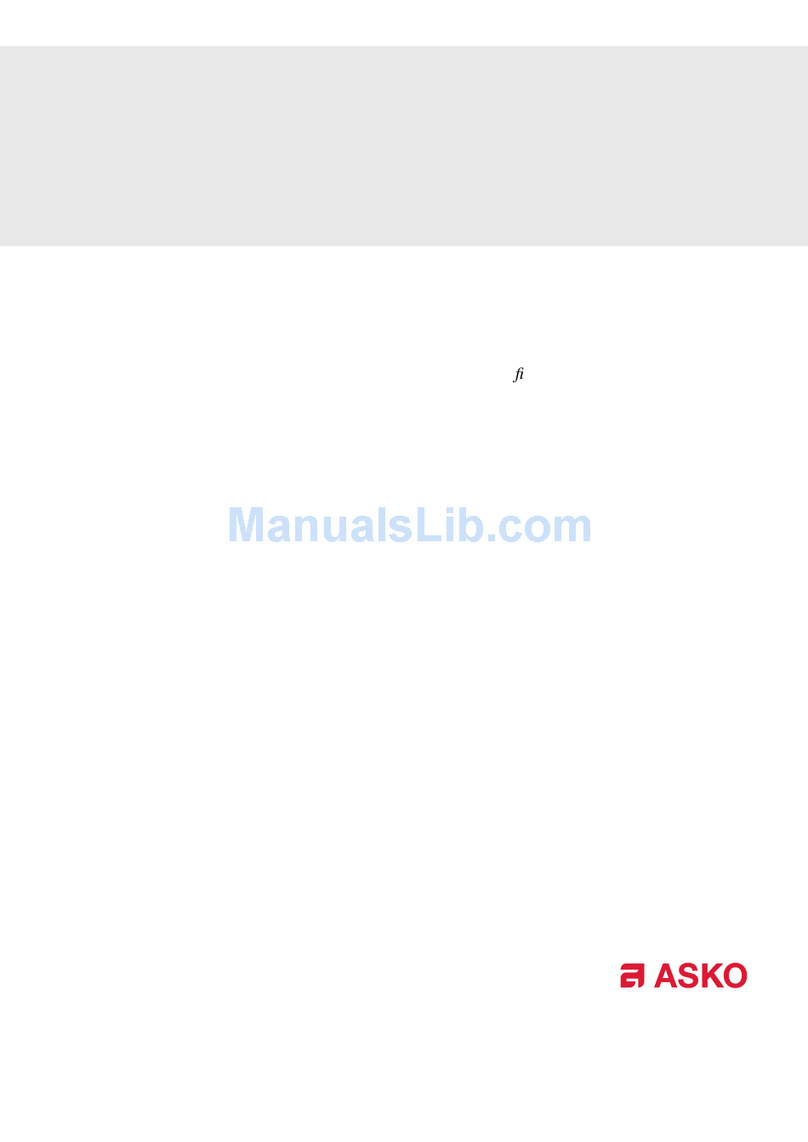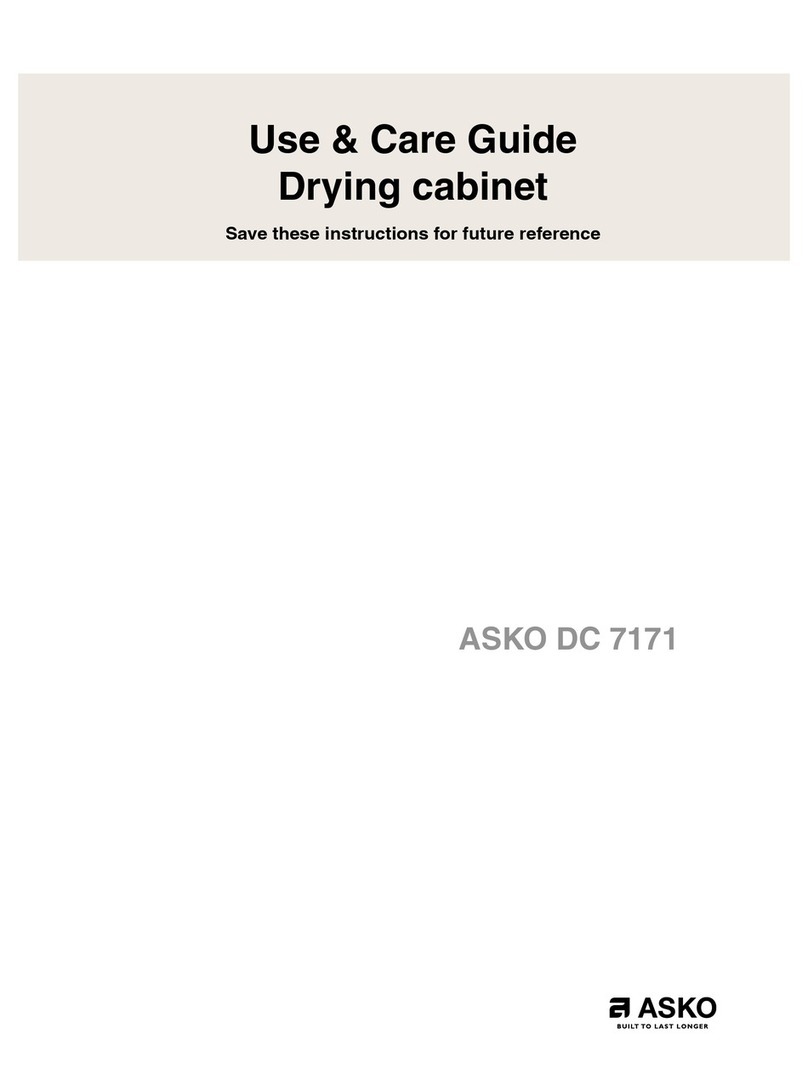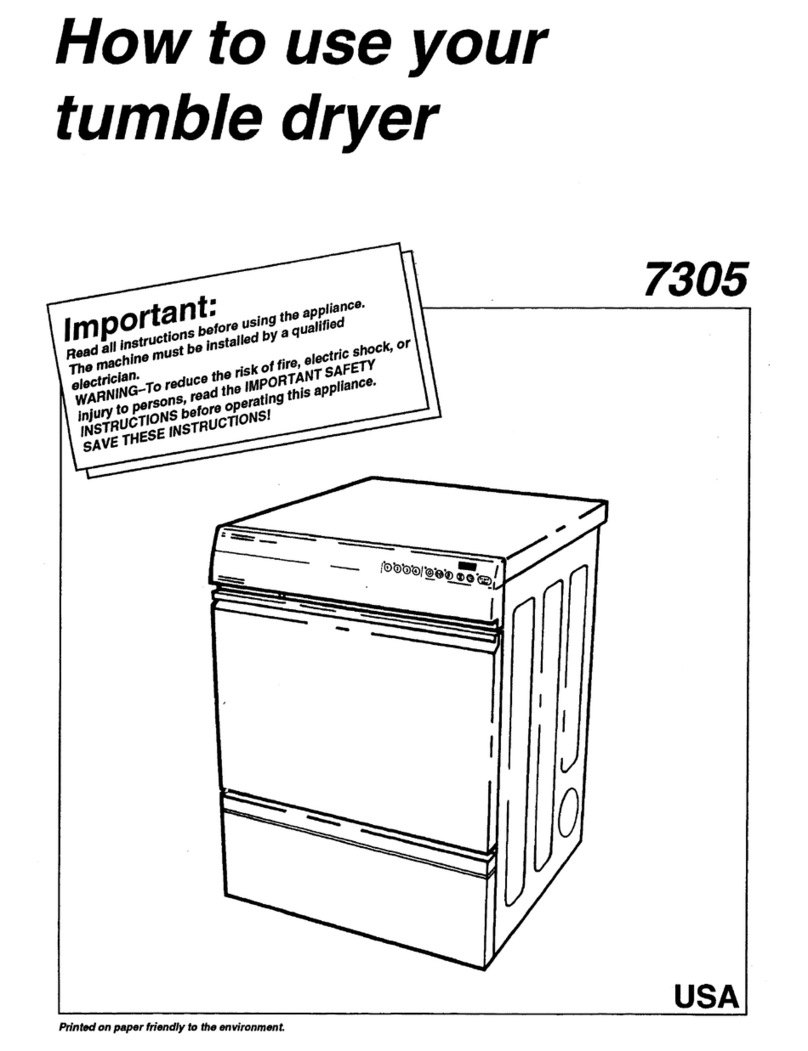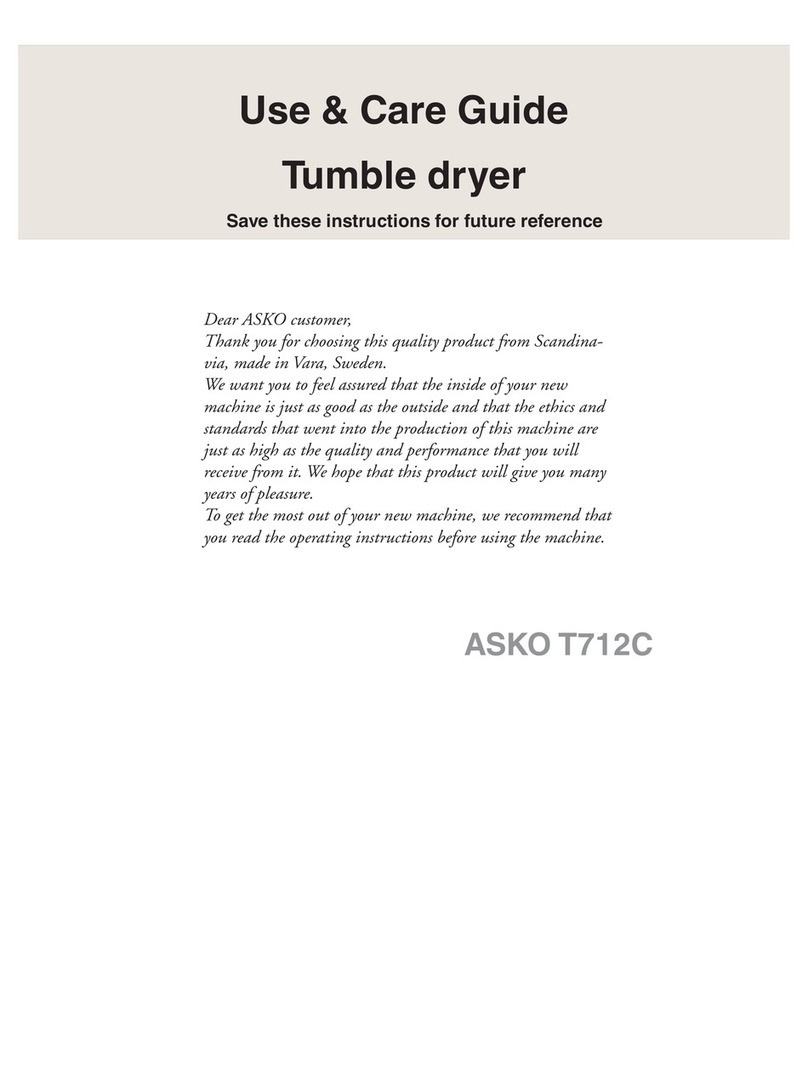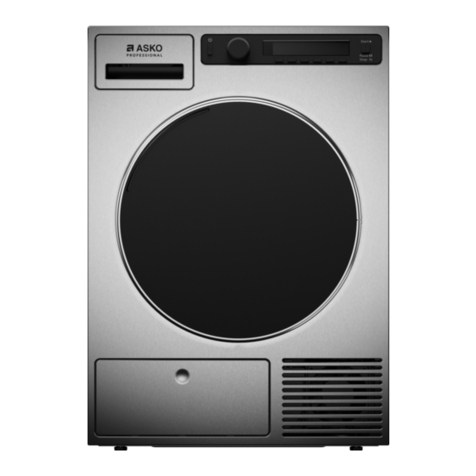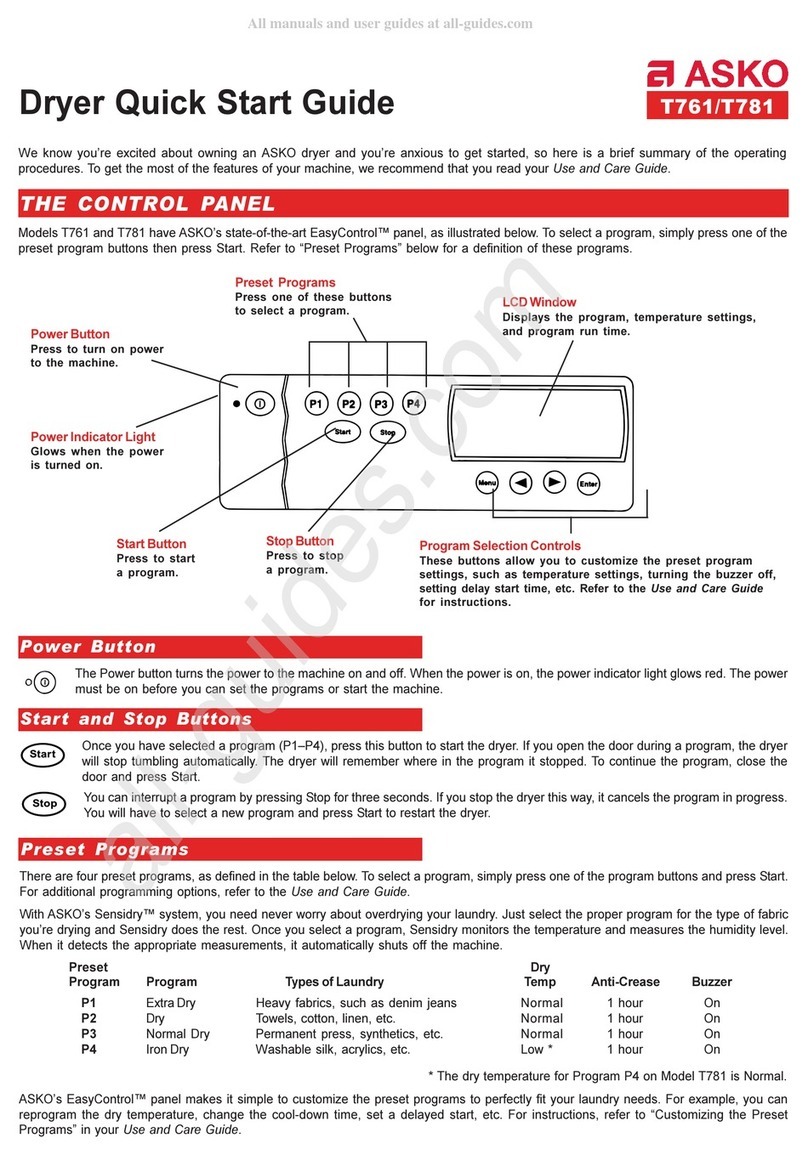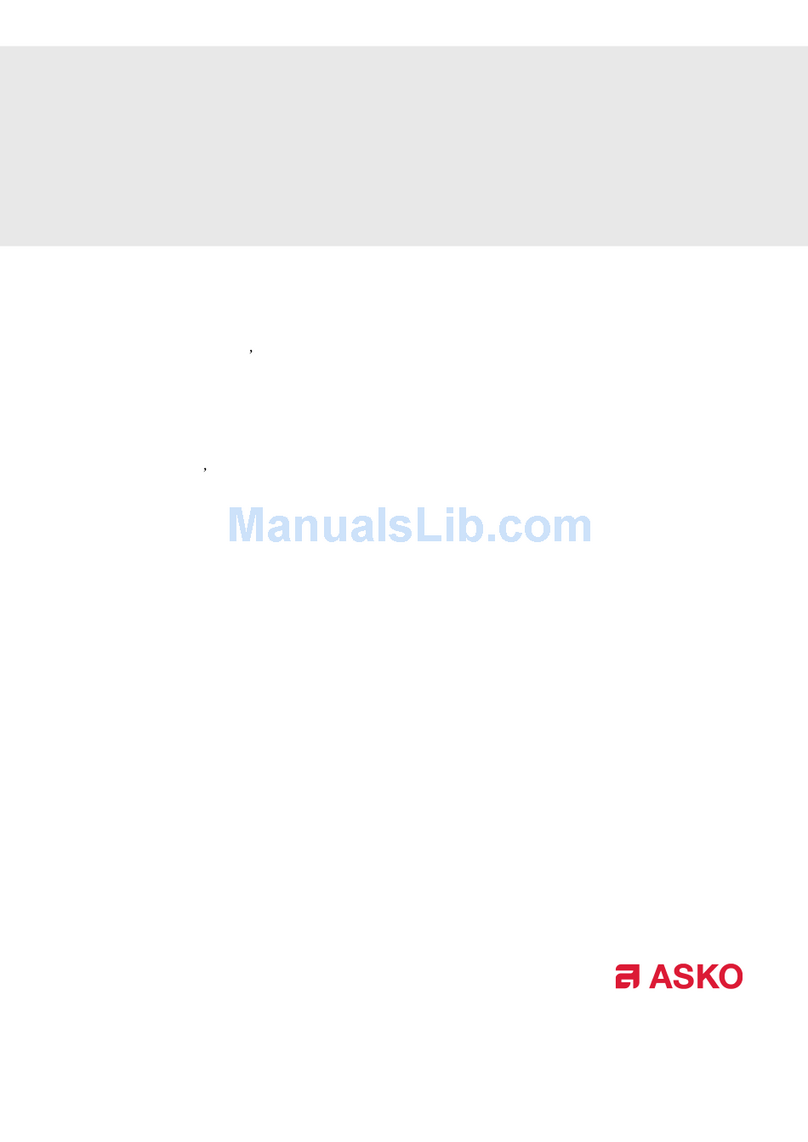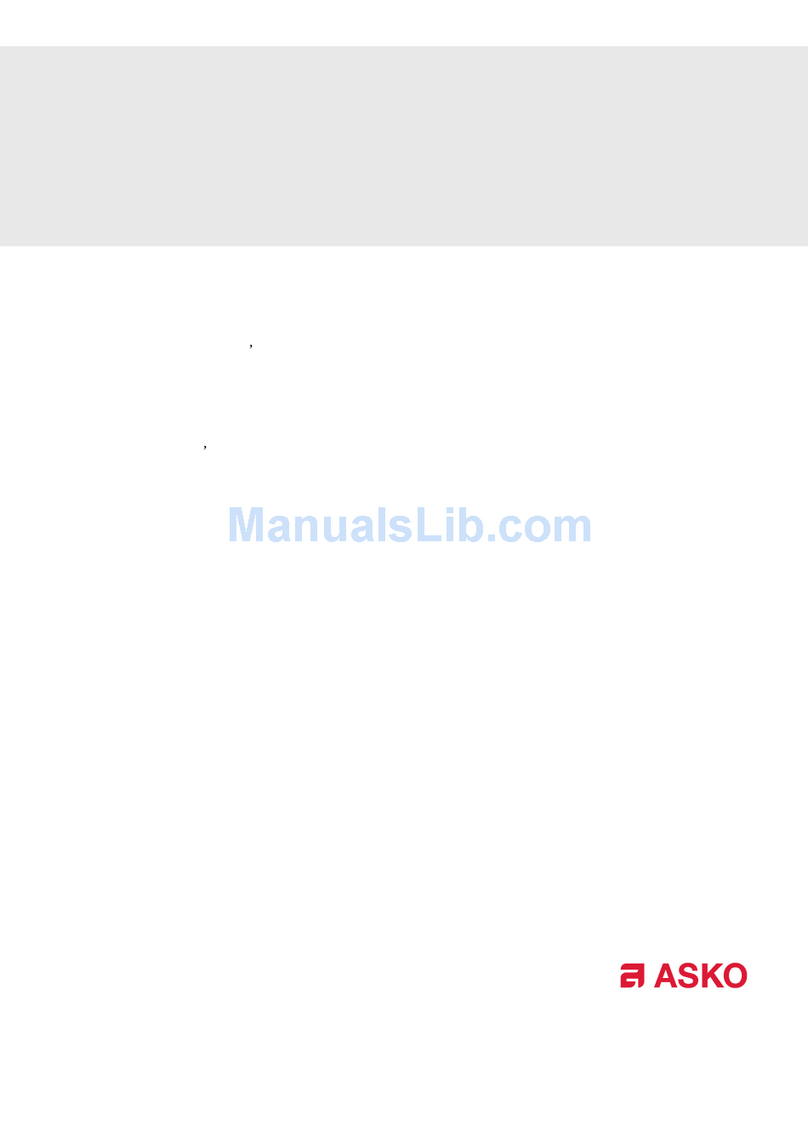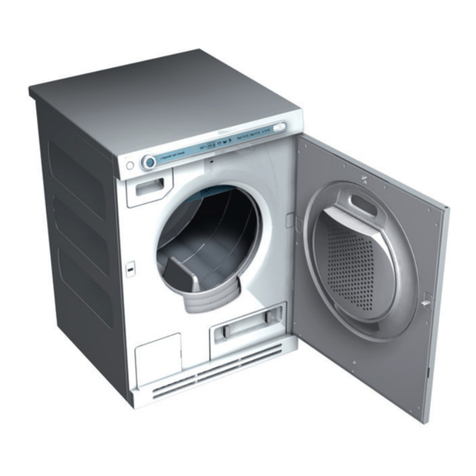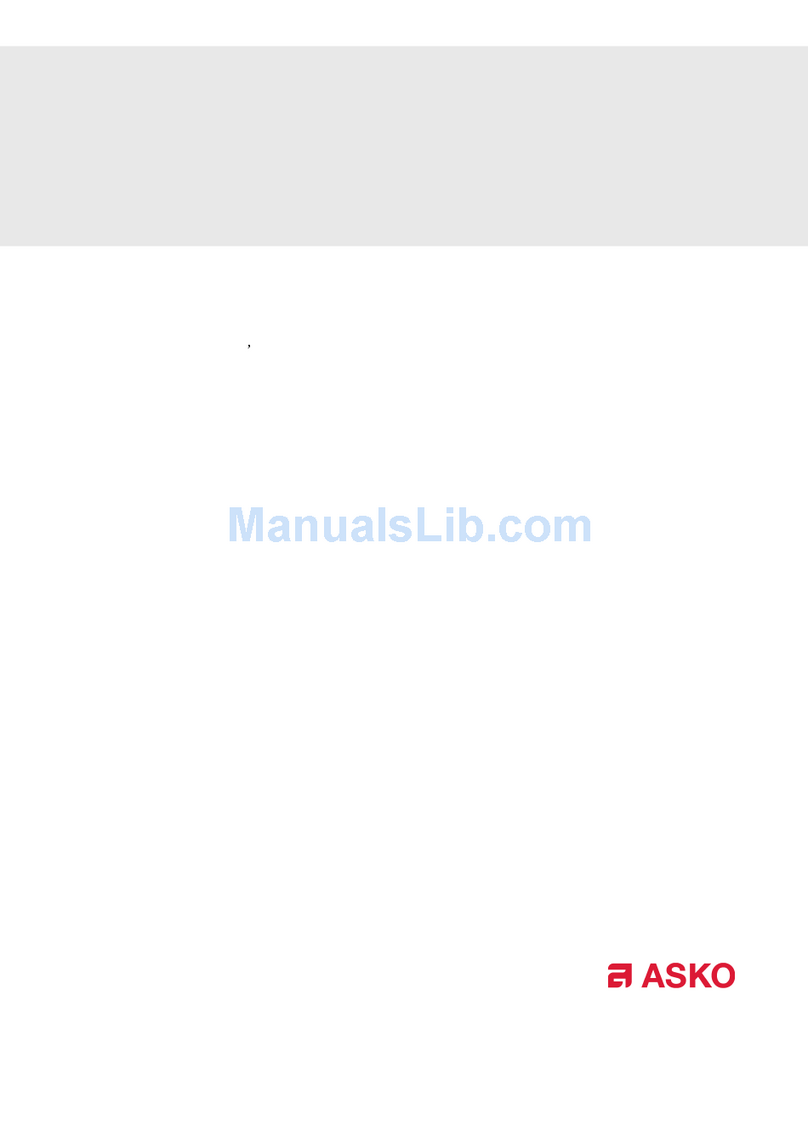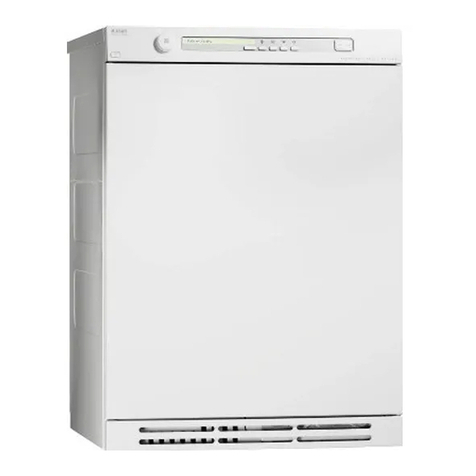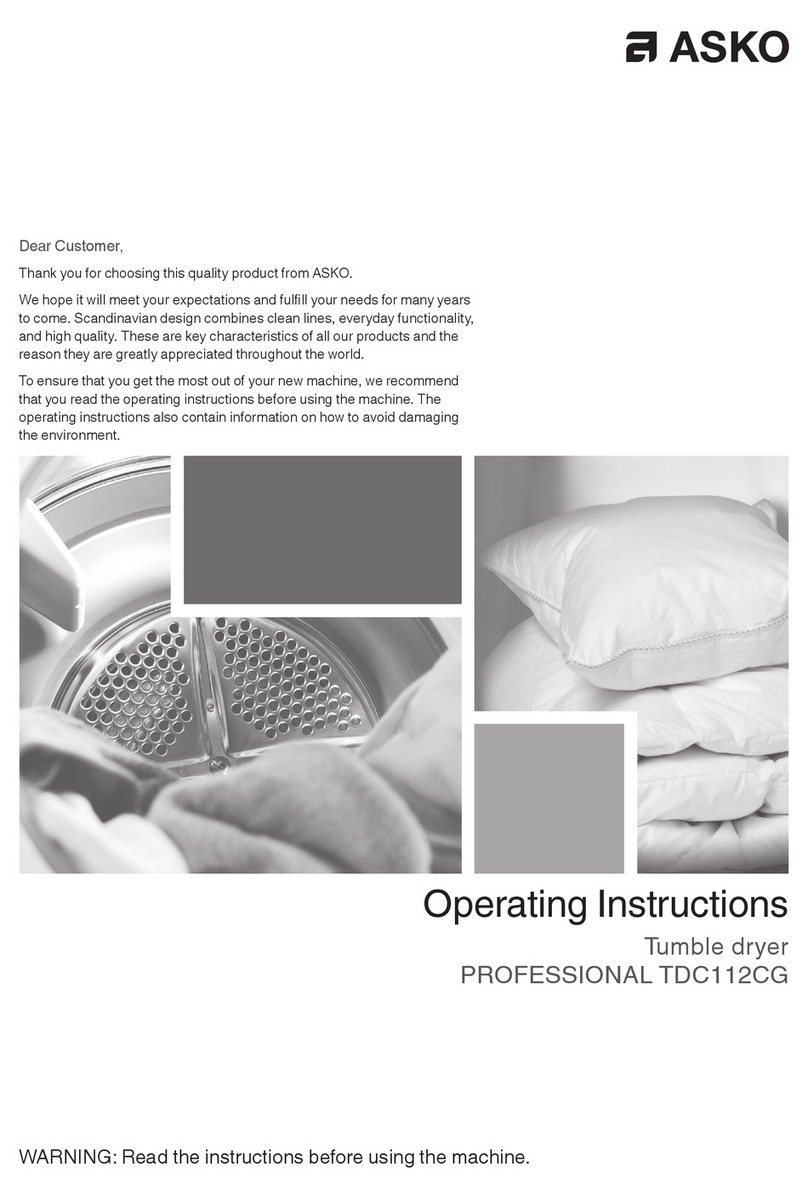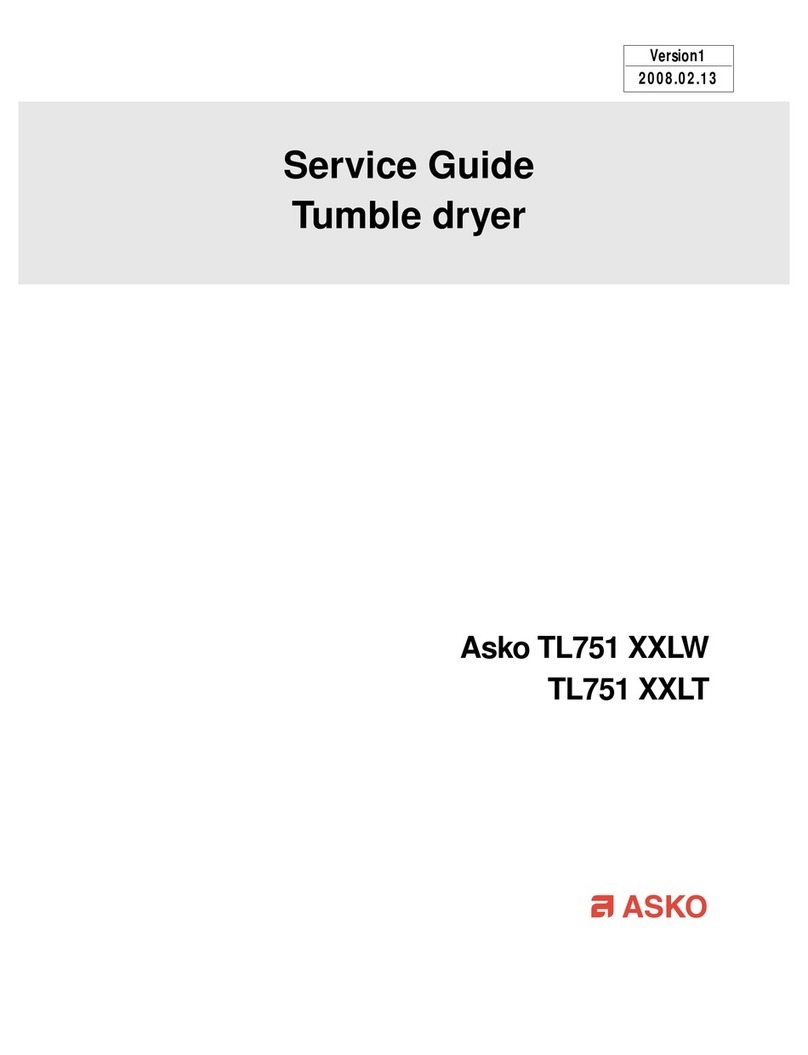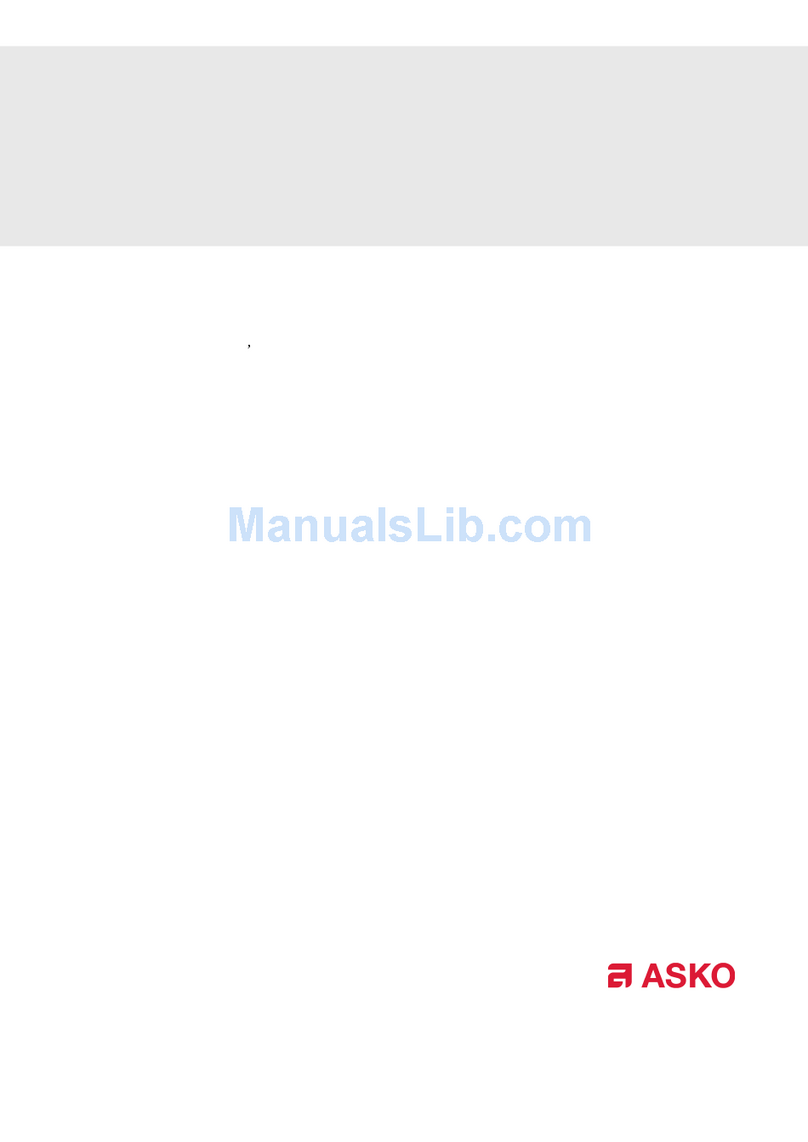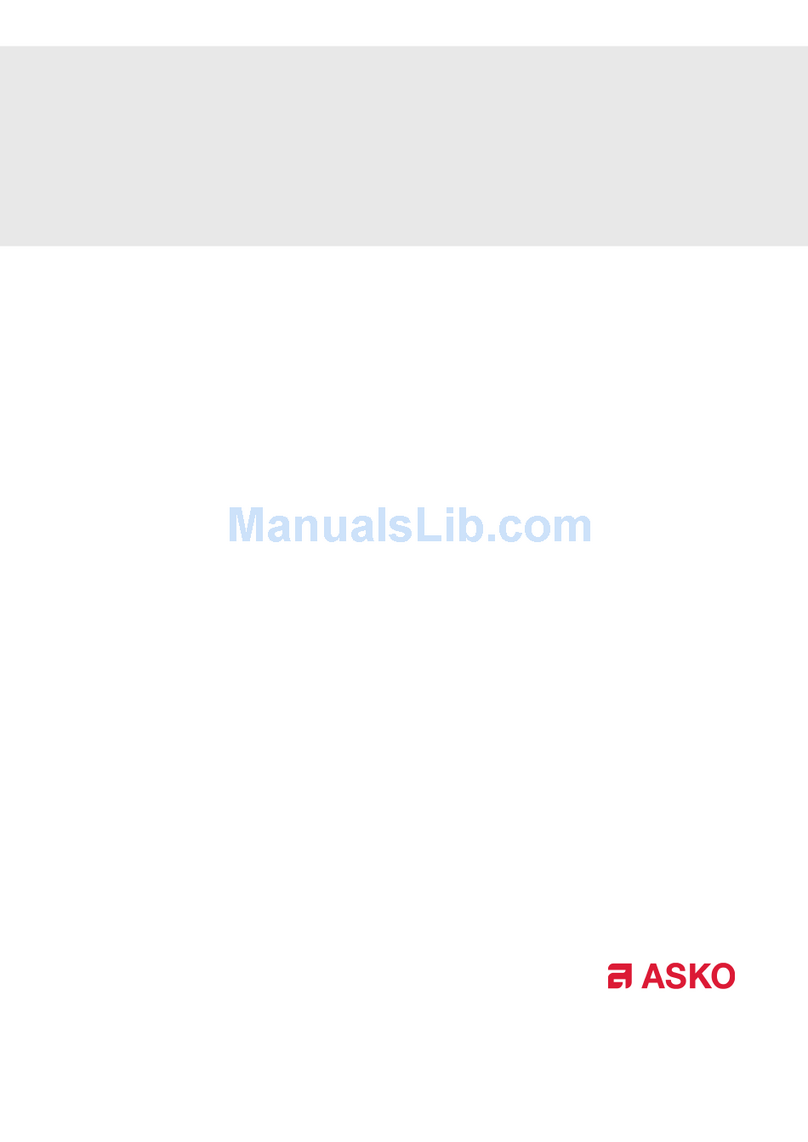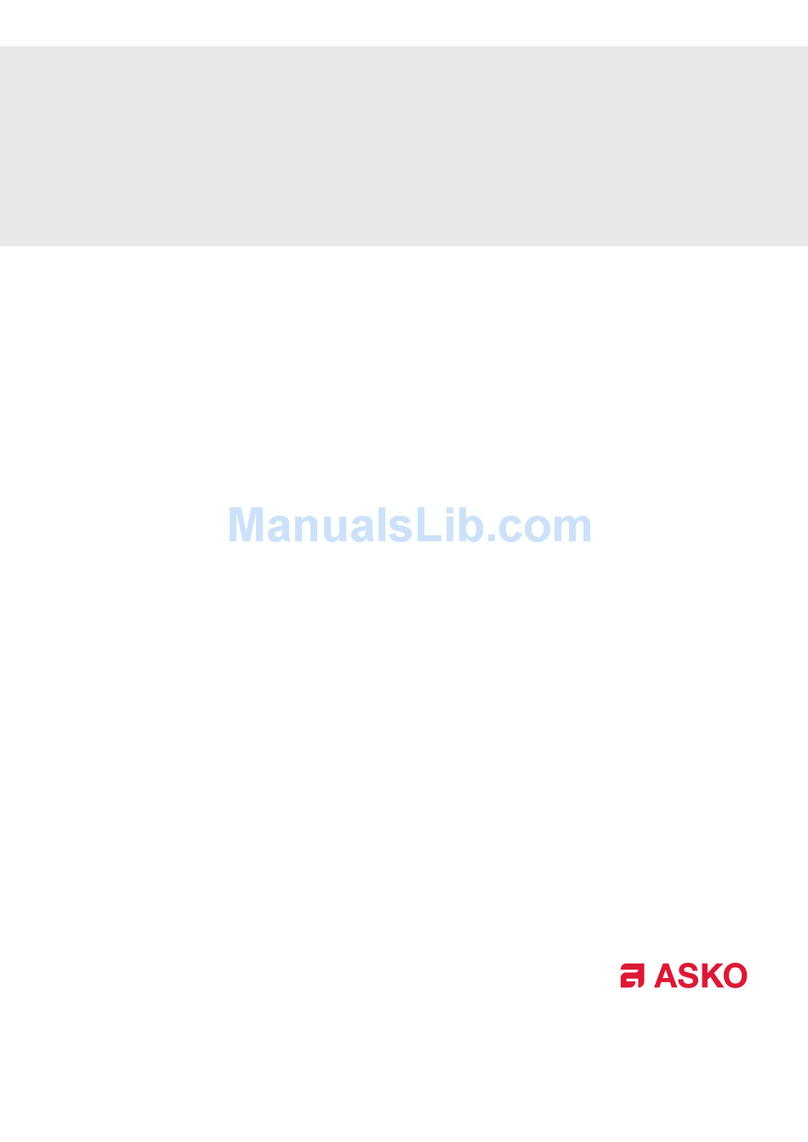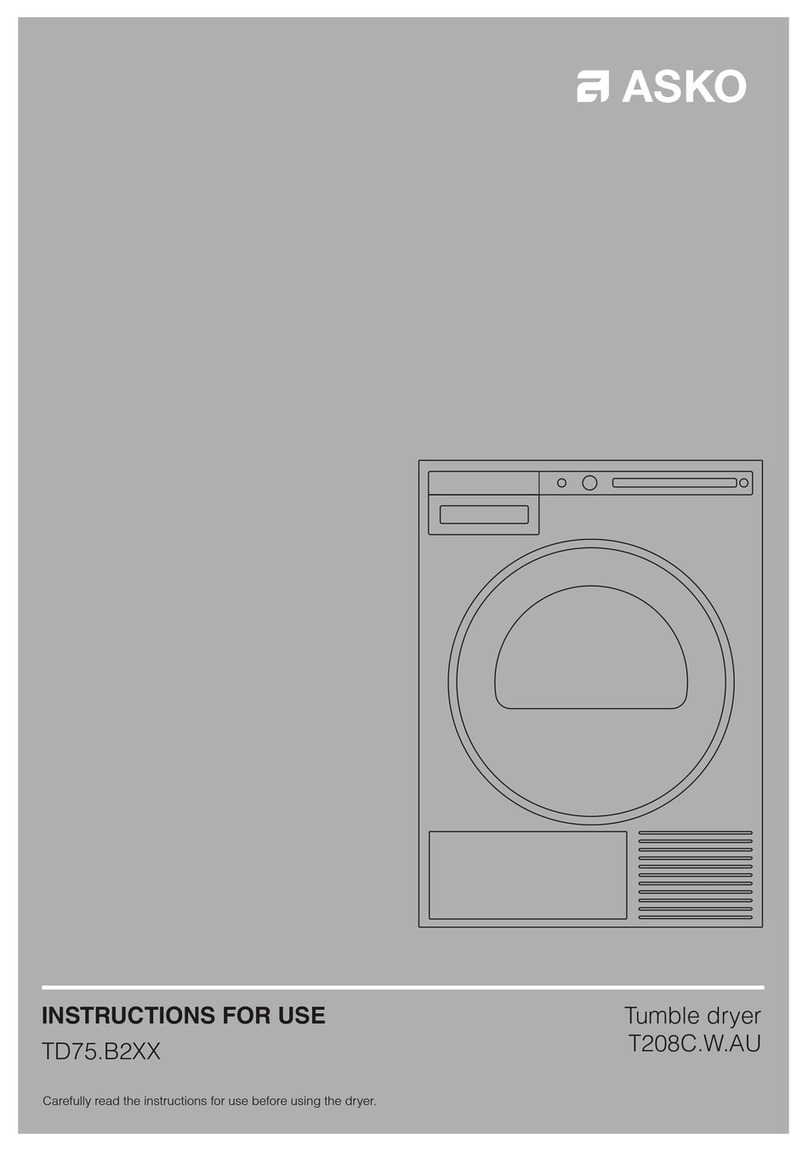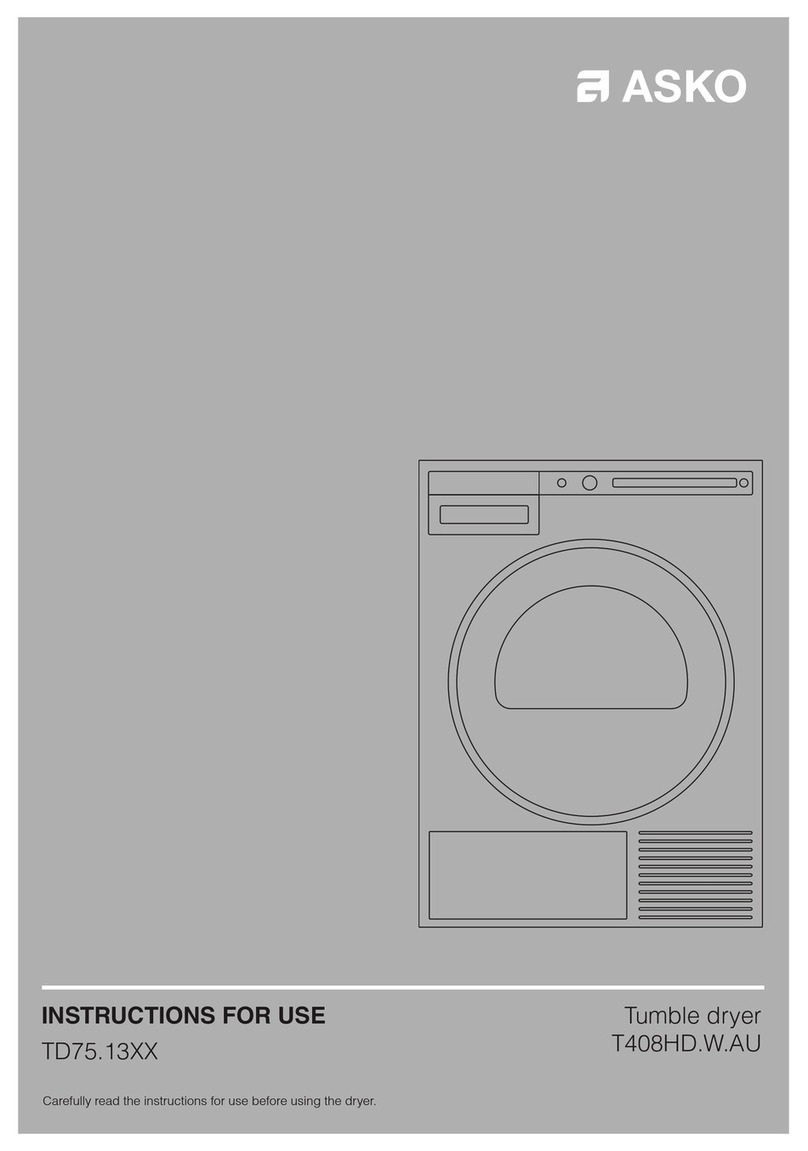
5
2SAFETYINSTRUCTIONS
To minimize the risk of fire in a tumble dryer,
the following should be observed:
• Items that have been spotted or soaked with
vegetable or cooking oil constitute a fire
hazard and should not be placed in a tumble
dryer.
Oil-affected items can ignite spontaneously, es-
pecially when exposed to heat sources
such as in a tumble dryer. The items become
warm, causing an oxidation reaction in
the oil. Oxidation creates heat. If the heat can-
not escape, the items can become hot
enough to catch fire. Piling, stacking or storing
oil-affected items can prevent heat
from escaping and so create a fire hazard.
If it is unavoidable that fabrics that contain ve-
getable or cooking oil or have been
contaminated by hair care products be placed
in a tumble dryer they should first be
washed in hot water with extra detergent - this
will reduce, but not eliminate, the
hazard.The ’cool down’ cycle of tumble dryers
should be used to reduce the
temperature of the items. They should not be
removed from the tumble dryer or piled
or stacked while hot.
• Items that have been previously cleaned in,
washed in, soaked in or spotted with
petrol/gasoline, dry-cleaning solvents or other
flammable or explosive substances
should not be placed in a tumble dryer.
Highly flammable substances commonly used
in domestic environments include
acetone, denatured alcohol, petrol/gasoline,
kerosene, spot removers (some brands),
turpentine, waxes and wax removers.
• Items containing foam rubber (also known
as latex foam) or similarly textured rubberlike
materials should not be dried in a tumble dryer
on a heat setting.
Foam rubber materials can, when heated, pro-
duce fire by spontaneous combustion.
• Fabric softeners or similar products should
not be used in a tumble dryer to eliminate
the effects of static electricity unless this practi-
ce is specifically recommended by the
manufacturer of the fabric softener or product.
• Undergarments that contain metal reinfor-
cements should not be placed in a tumble
dryer.
Damage to the tumble dryer can result if metal
reinforcements come loose during
drying. When available a drying rack could be
used for such items.
• Plastic articles such as shower caps or babies’
waterproof napkin covers should not
be placed in a tumble dryer.
• Rubber-backed articles, clothes fitted with
foam rubber pads, pillows, galoshes and
rubber-coated tennis shoes should not be pla-
ced in a tumble dryer.
VENTED DRYERS
• that there has to be adequate ventilation to
avoid the back flow of gases into the room
from appliances burning other fuels, including
open fires, when operating the tumble dryer.
• that exhaust air must not be discharged into a
flue which is used for exhausting fumes
from appliances burning gas or other fuels






